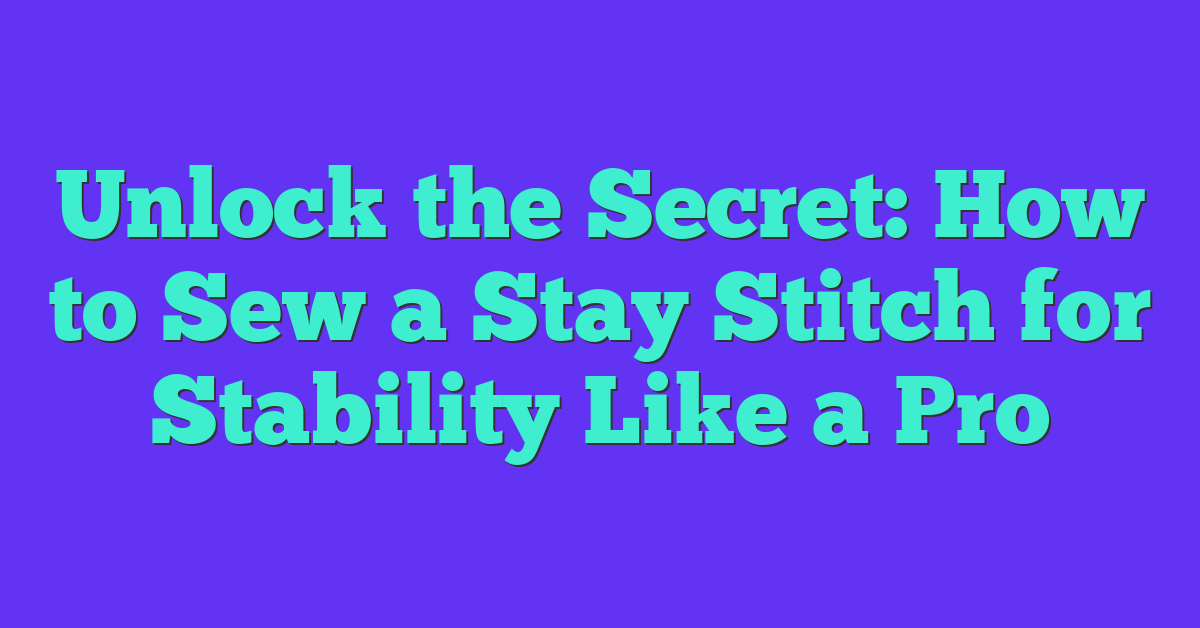Summer’s calling, and there’s nothing better than lounging by the beach or pool in style. I love how a simple beach cover-up can add that extra flair while keeping things comfy and practical. The best part? You don’t need to spend a fortune on store-bought options when you can create one yourself.
Choosing the Right Fabric
The right fabric transforms a simple project into a stylish and functional beach cover-up. I always recommend focusing on comfort, breathability, and visual appeal.
Lightweight and Breathable Materials
Lightweight fabrics, such as cotton voile, linen, or chiffon, are excellent for cover-ups. These materials feel airy and keep the body cool under the summer sun. Linen, for instance, absorbs moisture well and dries quickly, making it ideal for beach settings. Synthetic options like rayon also work, but I prefer natural fibers for their softness and eco-friendliness. Whichever fabric you choose, ensure it feels comfortable against your skin when worn over swimwear.
Selecting Summer-Friendly Patterns
Patterns with tropical themes, floral prints, or nautical stripes complement summer vibes. Bright colors like turquoise, coral, and sunny yellow stand out beautifully on the beach. If you’re drawn to simplicity, solid pastel shades can look equally chic. When cutting patterned fabric, I consider alignment, ensuring motifs appear intentional and symmetrical on the final piece. This small detail elevates the overall design.
Tools and Supplies Needed
Crafting a beach cover-up is simple with the right tools and materials. A well-prepared workspace ensures an enjoyable sewing experience.
Essential Sewing Tools
- Sewing Machine: A reliable machine with basic stitch options is sufficient. A zigzag stitch capability helps when working with lightweight fabrics.
- Fabric Scissors: Sharp scissors designed for fabric cutting ensure clean and precise edges.
- Measuring Tape: Use a flexible tape for accurate body measurements and fabric cutting.
- Pins or Clips: These keep your fabric securely in place while positioning the pieces together.
- Seam Ripper: Mistakes happen, and a seam ripper makes it easy to undo stitches without damaging fabric.
- Iron and Ironing Board: Ironing seams, hems, and folds during sewing creates a polished, professional look.
Additional Accessories to Consider
- Tailor’s Chalk or Fabric Marker: Mark fabric before cutting or sewing to stay on track with your desired shape.
- Rotary Cutter and Cutting Mat: These assist in cutting straight edges on larger fabric pieces quickly and accurately.
- Bias Tape Maker: A useful tool for creating neat bias tape to finish edges of curved areas.
- Universal or Lightweight Needles: Ensure your needles match the material; lightweight needles work best for delicate fabrics like chiffon or voile.
- Elastic Band (optional): Add elastic to the waist or neckline for a flexible, adjustable fit.
- Decorative Trim: Incorporate pompoms, lace, or tassels for an extra touch of style.
Sticking to the correct tools and supplies makes the process efficient and enjoyable.
Step-By-Step Sewing Instructions
Creating a beach cover-up involves a few simple steps. Following a clear guide ensures a smooth sewing process and a stylish result.
Measuring and Cutting the Fabric
Accurate fabric measurements are essential for a well-fitting cover-up. I start by measuring the shoulders, chest width, and desired length of the cover-up. Adding 1 inch to each measurement allows for seams. Using these measurements, I mark the fabric with tailor’s chalk, ensuring straight lines. A rotary cutter or sharp fabric scissors helps make precise cuts without fraying.
Preparing the Edges
Clean edges prevent unraveling, especially with lightweight materials. I recommend overlocking or using a zigzag stitch along all raw edges. If an overlocker isn’t available, folding the edges over about 1/4 inch and sewing a straight stitch creates a neat finish. For sheer fabrics like chiffon, a narrow hem works well.
Assembling the Pieces
Joining fabric pieces correctly ensures durability and comfort. I align the shoulder seams first, securing them with pins or clips. Sewing these seams with a straight stitch, I then press them open using an iron. Next, I attach the side seams, stopping just below the armholes to leave enough room for easy movement. The iron helps flatten seams for a polished look.
Adding Finishing Touches
Decorative details enhance the overall design. I often add trims like lace or a pom-pom border along the hem. If more structure is needed around the waist, elastic bands or drawstrings offer excellent options. For sleeveless designs, bias tape around the armholes creates a smooth, professional finish. Adding a label or small embroidery detail personalizes the piece beautifully.
Tips for Customization
Personalizing a beach cover-up makes it unique and reflects your style. Adjusting fit and incorporating decorative elements create a tailored and one-of-a-kind piece.
Adding Decorative Elements
Decorative elements let you elevate your cover-up’s aesthetics. Embroider patterns like seashells, palm trees, or simple floral motifs to add a beach vibe. Use trims such as tassels, pom-poms, or lace along hemlines or sleeves for a playful or boho touch. Sew on fabric patches with tropical designs or iron-on appliqués for a quick flair. Experiment with fabric paint or dye to create ombré effects or patterns like tie-dye for vibrant, summer-ready results.
Adding transparent panels or cutouts with lace or mesh gives texture while maintaining a lightweight feel. Choose embellishments that complement the fabric type, ensuring durability and comfort.

Adjusting for Fit and Style
Customizing the fit ensures a flattering appearance and ease of wear. If you’re working with a loose-fit pattern, add a drawstring waist or elastic band to contour the silhouette. Create slits on the sides or at the front to enhance mobility and add an elegant touch. Alter sleeve lengths by choosing short, cap, or flutter sleeves for variety, depending on your style and comfort preferences.
Consider necklines to reflect your style—a deep V-neck for a bold look, a rounded neckline for simplicity, or off-shoulder for a trendy twist. For an asymmetrical or high-low hemline, measure carefully to achieve a balanced yet dynamic look.
Caring for Your Beach Cover-Up
Proper care ensures your handmade beach cover-up stays vibrant, functional, and lasts for multiple summers. Focus on washing techniques and storage solutions to keep it in top condition.
Washing and Maintenance Tips
Gentle handling during washing prevents damage to delicate fabrics like chiffon or cotton voile. I recommend using a mild detergent and selecting the delicate cycle on your washing machine or hand washing for extra care. Avoid bleach, even on white fabrics, to prevent weakening fibers.
Drying your cover-up properly maintains its structure and prevents shrinkage. Lay it flat on a clean surface or use a drying rack. Refrain from using a dryer, especially for lightweight materials, as heat can cause fabric deterioration. If wrinkles appear, use a low-heat iron suitable for the material, testing a small area first to avoid burns.
Storing Properly for Longevity
« How to Sew a Pet Bed for Cats or Dogs: Step-by-Step Guide to Crafting the Perfect Cozy Spot
How to Sew a Tablecloth for Your Dining Room: Easy DIY Guide to Elevate Your Home Décor »
Storing your cover-up between beach days helps it retain its shape and prevents discoloration. Fold it gently and place it in a breathable fabric bag to protect it from dust and pests. Plastic storage bags aren’t ideal, as they trap moisture and increase mold risk.
Hang your cover-up only if the fabric doesn’t stretch or deform. Avoid direct sunlight in storage areas to maintain the fabric’s color vibrancy. For chiffon or other lightweight materials, consider tissue paper between folds to avoid creasing.
Conclusion
Sewing your own beach cover-up is such a rewarding project. Not only do you get a customized piece that reflects your personal style, but you also gain the satisfaction of creating something unique with your own hands.
With the right tools, materials, and a little creativity, you can craft a cover-up that’s both practical and stylish for those sunny summer days. Plus, taking care of it properly ensures it’ll last for many seasons to come.
So grab your supplies, let your imagination run wild, and enjoy the process of making a piece that’s truly yours. Happy sewing!


















